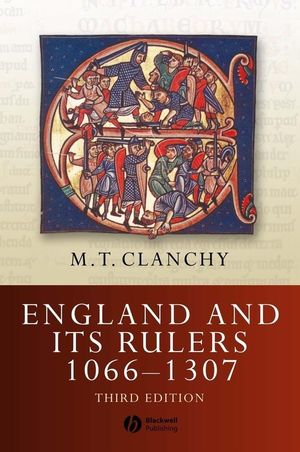|
Textbook
England and Its Rulers 1066 - 1307, 3rd EditionISBN: 978-1-4051-0649-8
Hardcover
360 pages
September 2006, ©2006, Wiley-Blackwell
 This is a Print-on-Demand title. It will be printed specifically to fill your order. Please allow an additional 10-15 days delivery time. The book is not returnable.
|
||||||
Preface to Second Edition.
Preface to First Edition.
Maps.
Map 1 England and France.
Map 2 England and the Mediterranean.
Map 3 Edward I’s kingdom in Britain.
1. England's Place in Medieval Europe.
England and its conquerors.
Europe and the world.
England’s destiny.
Interpretations of English History.
England and Britain.
Part I: The Normans (1066-1135):.
2. The Norman Conquest (1066-87).
Immediately after the Conquest.
Debates about the Conquest.
English feelings about the Normans.
Names and languages.
Domesday Book.
3. Norman Government (1087-1135).
William Rufus and Henry I.
The development of institutions.
The Exchequer.
Feudalism.
4. Church Reform.
The Anglo-Saxon church.
Lanfranc and Norman control.
Anselm and religios perfection.
Monastic expansion.
5. The Creation of Wealth.
Competition between churches and towns.
Markets and money.
What was wealth?.
Did the Normans make a difference?.
Part II: The Angevins (1135-99):.
6. Struggles for the Kingdom (1135-99).
Property and Inheritance.
Stephen and Matilda.
Henry II’s ancestral rights.
Henry II and his sons.
Richard I.
7. Law and Order.
The law and feudalism.
The systems described by Glanvill.
Henry II’s intentions.
Bureaucracy.
Why did England develop a system of its own?.
8. The Twelfth-Century Renaissance.
England’s place in this Renaissance.
Curiales and Latinists.
The Owl and the Nightingale.
Artists and patrons.
9. The Matter of Britain.
Arthur and Merlin.
Wales – defining an allegiance.
Modernization in Scotland.
Civilization in Ireland.
Part III: The Poitevins (1199-1272):.
10. King John and the Minority of Henry III (1199-1227).
The Pointevin connection.
The record of King John.
Magna Carter.
The regency of William the Marshal.
Implications of the minority.
11. The Personal Rule of Henry III (1227-58).
Contemporary rulers.
The return of Peter des Roches.
Henry’s style of kingship.
Henry’s European strategy.
The ‘Sicilian business’.
12. National Identity.
National feeling in Henry III’s reign.
The papacy and internationalism.
The identity of England.
The use of the English language.
From lordship to nation state.
The expulsion of the Poitevins.
13. The Commune of England (1258-72).
The confederates of 1258.
The idea of commune.
The Provisions of Oxford.
Henry III’s recovery.
Monarchy versus community.
The king and Westminster abbey.
14. Lordship and the Structure of Society.
Personal display.
Women and lordship.
Lords, freemen and serfs.
Lordship and management.
15. Epilogue: Edward I (1272-1307).
Assessing the king’s character.
The enforcement of royal rights.
The conquest of Wales.
The subjection of Scotland.
English law and nationalism.
Notes.
Genealogical Tables.
Normans and Angevins.
The Savoyards.
Suggestions for Further Reading.
Index.



